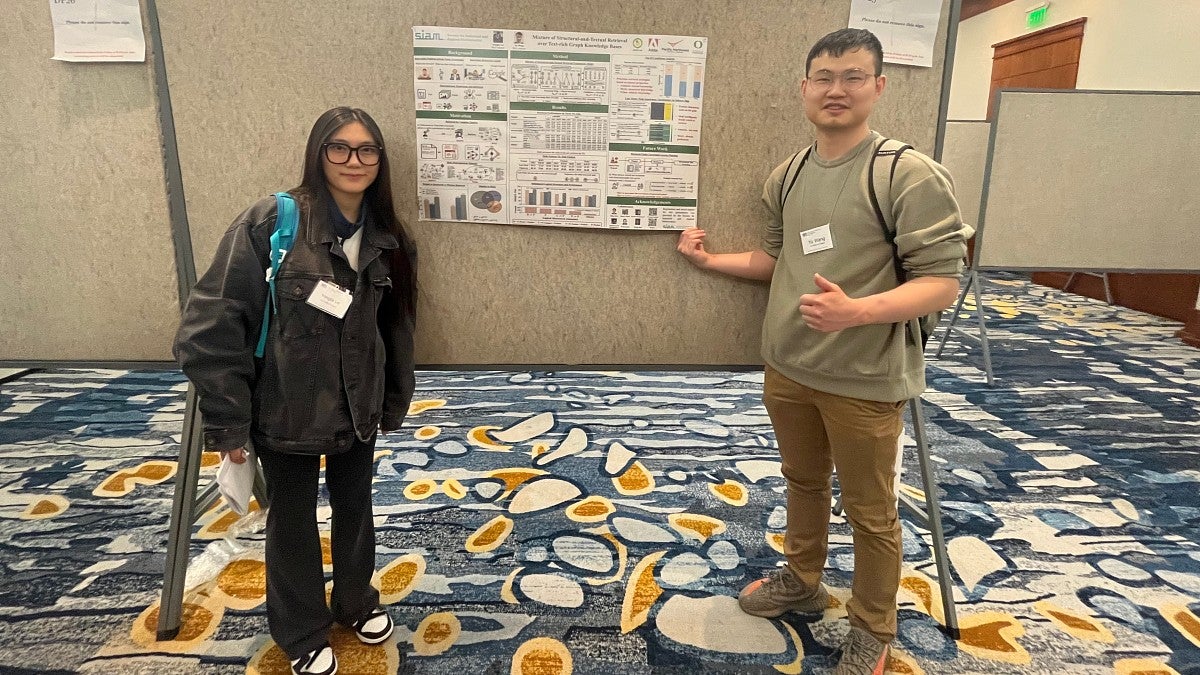
Efficient and accurate flow of information is critical to the world functioning as needed. Consider the information doctors need to prescribe patients the right medication, the context behind a cybersecurity attack, or a business finding the best match for a customer looking to buy a product.
But how can we find the needle in the haystack when it comes to finding just the right piece of information in the vast body of knowledge held by technology? How can the systems we use to find what we need to solve a problem handle the many different types of data and knowledge that exist?
These are the sorts of questions Assistant Professor Yu Wang is working to answer with his computer science research in the School of Computer and Data Science in the College of Arts and Sciences.
"To me, retrieving information on a high level to help with a downstream task is just a very general problem appearing in every domain. No matter what task you are working on, you need to have the right knowledge on your mind to answer your question, to handle this task,” said Wang. “The problem is that there are so many examples of knowledge in this world that we need some way to sort through all the available information.”
Wang’s research involves using machine learning to model enormous sets of data on a graph where related nodes representing pieces of information are linked. This way, research and AI models can explore a given node’s neighbors to find the most important and relevant information to a user’s query.
“With current AI, if you ask who the president of the United States is, it can definitely answer correctly,” Wang explains. “But if you ask any kind of domain-specific question, like related to cybersecurity or some biomedical topic, it is highly likely that it does not know. So how can we mitigate the gap here?”
The potential applications of Wang and his team’s efforts to mitigate this gap are nearly limitless. From the medical and cybersecurity fields to problems related to commerce and social media, they are working to solve problems that relate to numerous sectors and industries.
Before coming to the UO, Wang worked with corporations like Adobe and Home Depot to develop innovative AI tools that improve user experiences, and he continues to connect with industry players as he conducts his research.
Originally from China, Wang developed an interest in pursuing computer science as a career during an internship in the US. From there, he earned a doctorate at Vanderbilt University before coming to the UO for its supportive environment, abundance of research and academic opportunities, and proximity to key industry partners.
Most of all, though, Wang works to make a positive impact on his community.
“I feel the most meaningful moment when I'm doing all this research is when I can use this kind of machine learning technique to really make some impact. When there's a query coming into our developer machine learning system, we can really find those corresponding right pieces of knowledge.”
With the help of the UO resources and research assistants, Wang’s research is helping us move towards a world where the accurate information we need to solve nearly any problem is right at our fingertips.
—By Evan Ney, College of Arts and Sciences
